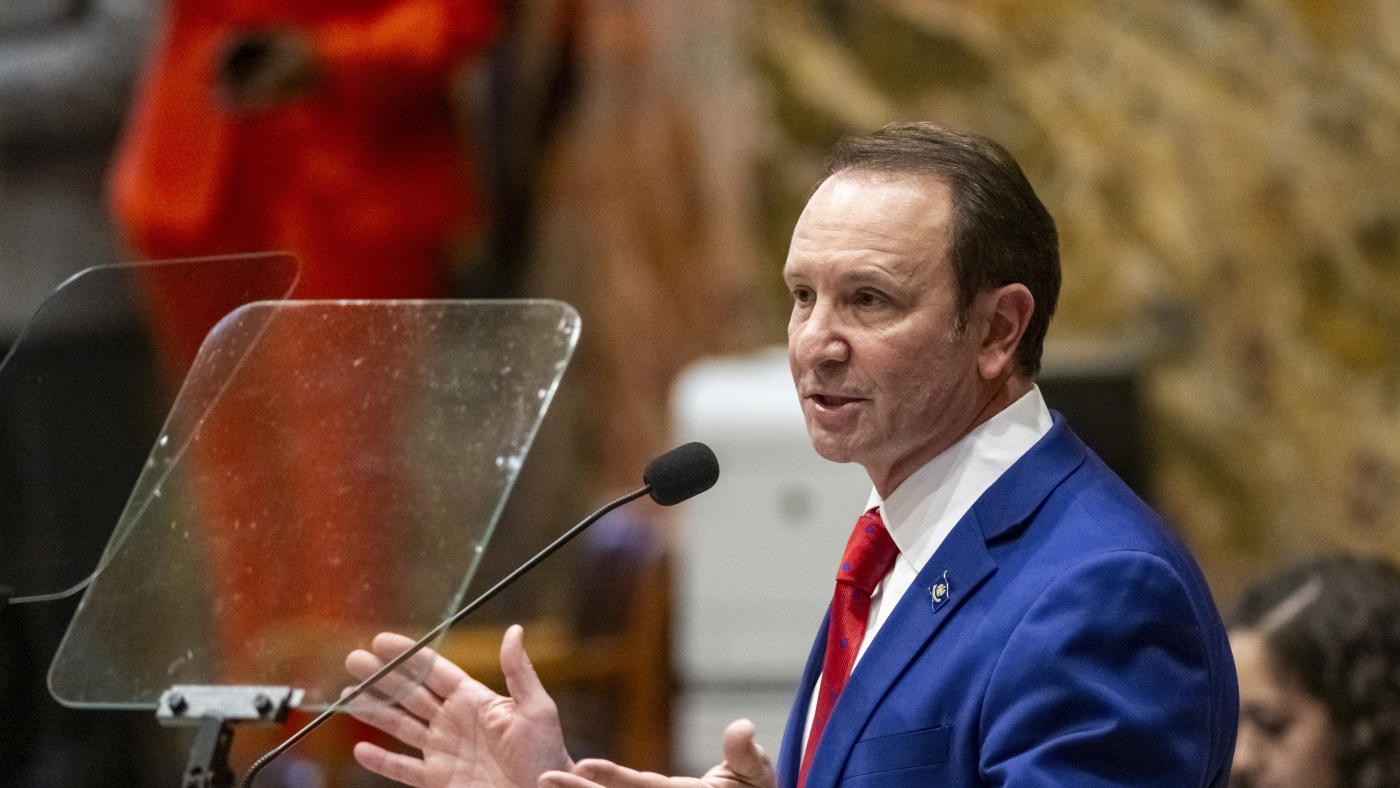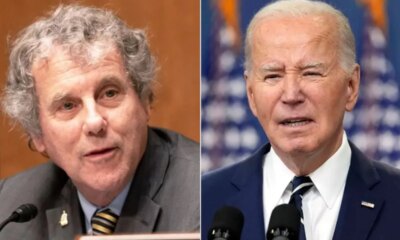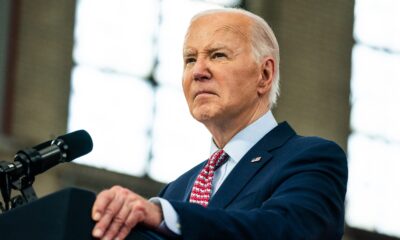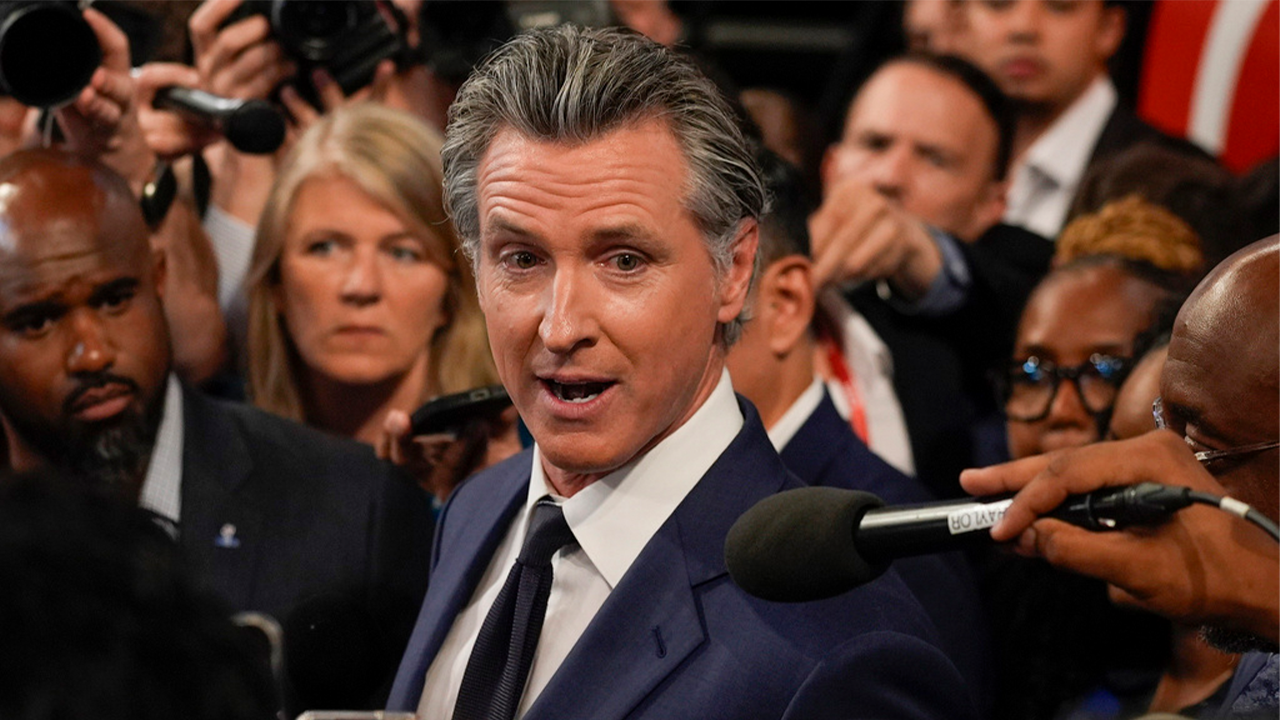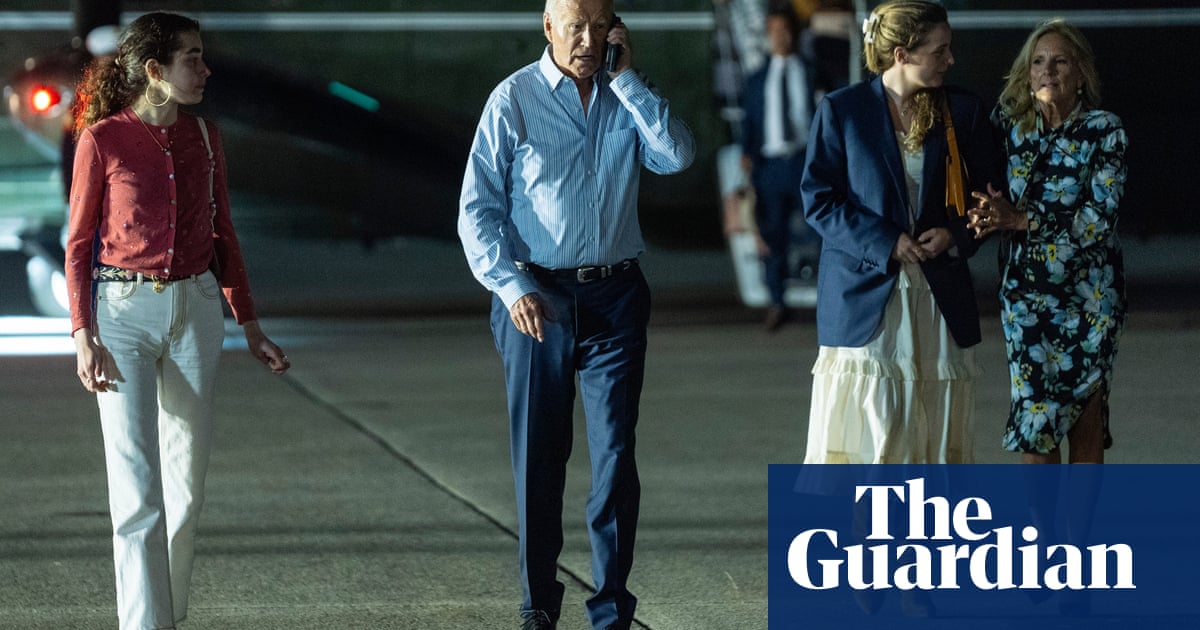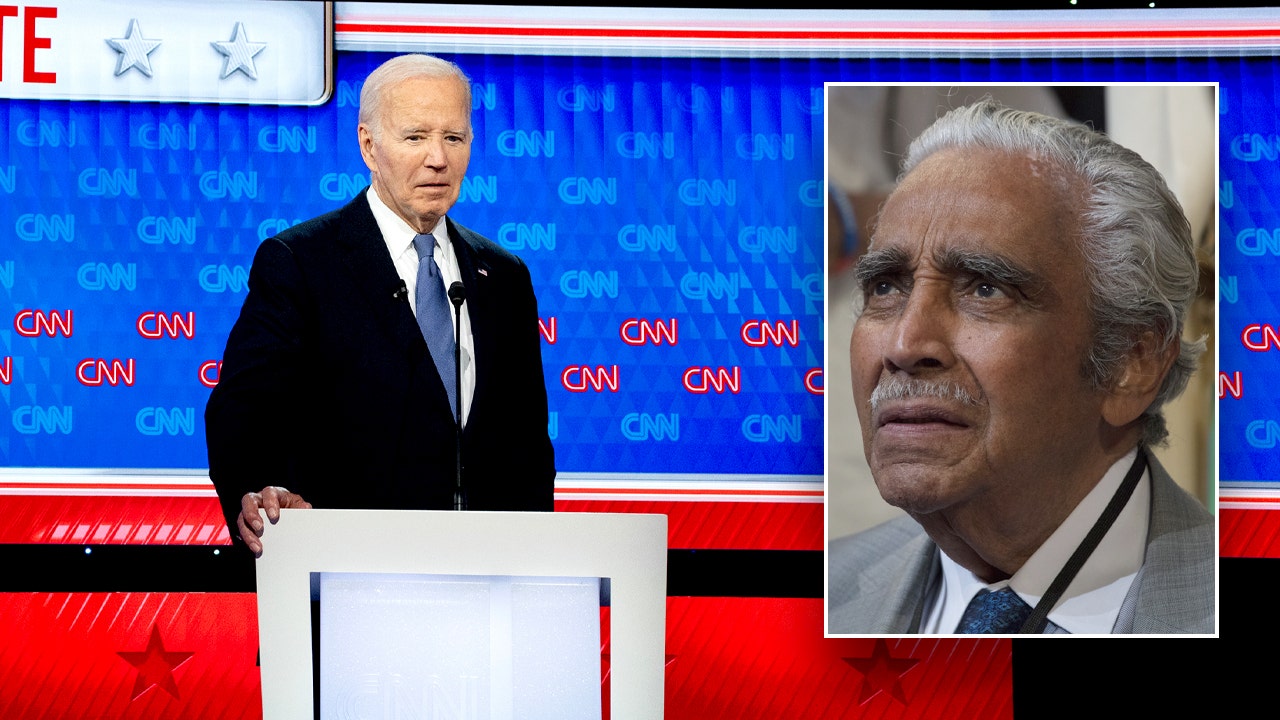New York
Electric Cars Are the Future. But Renting One? Good Luck.

As a carless New Yorker, I sometimes get a little smug about my carbon footprint. I regularly bike, use public transit and when I do need a car for the occasional getaway, I rent.
But that all changed this summer, when I booked a car to drop off my daughter at sleepaway camp in New Hampshire. The audio selection I chose for the return drive? “The Climate Book,” by Greta Thunberg, the Swedish environmental activist.
The vibe of this annual summer road trip, traditionally a celebration of parental freedom, soon turned somber. There I was, driving down I-91, listening to endless tales of human suffering wrought by the burning of fossil fuels that were currently powering my rental car.
If I needed more convincing, a week after drop-off, catastrophic flooding in Vermont came dangerously close to the camp. (Other camps in the area fared worse.)
That was it. I would be picking up my daughter in an electric vehicle.
E.V.s are not a perfect solution — the manufacturing of their batteries can involve pollution and questionable labor practices. However, they are far better for the environment than gas-powered cars.
But was renting an electric vehicle possible? And would I, someone still flummoxed by a car’s Bluetooth, be able to hack it?
A basic Google search (“E.V. Rental NYC”) confirmed the first question, at least. Hertz was one of the top results. A spokeswoman said the company was “seeing solid growth in E.V. rentals,” and that 3,750 plug-in cars were available for rent in the New York City area.
But for the date I needed, those thousands of Hertz E.V.s didn’t seem to be available. Kennedy Airport had some options, but getting a car there would have added about five hours of subway schlepping to my trip. Similar searches using Avis and Enterprise proved unsuccessful.
I chalked up the inconvenience to the possibility that commercial rental car companies were still catching up to a moment where E.V.s have become the fastest-growing segment in the auto industry. This year, nearly 300,000 new electric cars were sold in the United States between April 1 and June 30, an increase of about 48 percent from the same time period in 2022, according to Cox Automotive, a market research firm.
By 2030, there could be 30 to 42 million passenger electric vehicles on American roads, requiring 174,000 and 211,000 public fast-chargers, according to a study by the National Renewable Energy Laboratory. That’s roughly six times the number of public fast-chargers out there now.
Until charging infrastructure has expanded, renters might be gun-shy about trying out E.V.s. But I was determined. UFODrive, a European company with locations in Brooklyn and Manhattan, ended up being my best option. It had an electric car — within walking distance of my home — on the date I needed.
The reservation process involved downloading an app, which controlled everything from payments to turning the car on. It takes you through a vetting process, then asks you the mileage you are expecting to cover, which affects the price, and for a refundable $750 deposit.
On a Friday evening, having just binged a round of E.V. how-to videos, I showed up at a garage near Columbus Circle. Minutes later, I was staring at a gleaming, white Tesla Model 3.
Suddenly, I remembered nothing. I started to sweat.
First things first, I thought: Charge the phone. I looked around for the USB port. Nada. What kind of high-tech car was this? I couldn’t go anywhere if my phone wouldn’t charge.
This was when the parking lot attendant, watching me in benevolent amusement, leaned inside to help. He placed my phone on a slanted, wireless charging surface to the right of the steering wheel.
“What else do I need to know,” I asked him. “And is everyone this stressed?”
All first-time electric car renters are, he said. He quickly explained how to use the app to lock, unlock and turn the car on.
I thanked the attendant profusely and coaxed the vehicle out into the streets.
Immediately, my biggest issue was the footwork involving the accelerator (known in olden times as the gas pedal). Whereas releasing a gas pedal gradually slows a car down, releasing this car’s accelerator kicks in an energy-saving process for the battery. When you’re new to it, it also makes the car jerk to an almost-stop.
I’d become the city’s worst taxi driver.
I headed to Harlem to pick up my 18-year-old son, whom I had enlisted as my co-pilot. But as I pulled up, I realized I’d forgotten to ask the garage attendant how to turn the car off.
This was when my range anxiety (a common fear among rookie E.V. drivers of being stranded with nowhere to charge) started. I was losing precious battery juice — and I hadn’t even left Manhattan. Would we make it to the supercharger?
The goal was to get to Brattleboro, Vt., where we would spend the night and visit a Tesla supercharging hub in the morning. My (very) rough calculations had us arriving with about 40 percent of our battery left. But once we were on the highway (and my foot had figured out how to nuance the accelerator for a smoother ride), I noticed the battery level was dropping fast.
It was not unlike watching it drop on my iPhone, except for the fact that I was driving in a very expensive metal box, on a dark, desolate highway. By the time we reached the hotel, the battery icon had turned a scary yellow color signaling we had dropped to 20 percent or under.
It was 10 p.m., but I still hadn’t figured out how to power the thing down. I got out of the car and tried locking it with the app; thankfully, the car turned off.
The next morning, when we pulled up to one of 16 superchargers, a man standing next to his car in the lot squinted at us.
“It’s his way of greeting the other Teslareans,” my son joked. But the guy looked concerned. He eventually let us know that one typically backs into a spot, to better access the charging cable. Cool, cool. We turned our car around and, after watching a quick how-to video on my phone, waited for about 30 minutes until we had 98 percent power.
Leaving Brattleboro with a full charge was crucial; we would soon be entering rural New Hampshire — the land that cellular companies forgot. There was a smattering of regular chargers in the area, but they would have required a detour plus several hours to fully charge.
The helpful Squinting Teslarean told me that he and his family were on their annual summer road trip to Vermont, and that they depended on the Brattleboro hub as their last big stop before venturing into the beyond. I feared I would need all the battery power possible.
But we were delivered safely at the camp and arrived with plenty of battery power left. (My 14-year-old daughter, who had no idea she was getting picked up in a Tesla, greeted me by calling me a poseur.)
My next worry — whether my daughter’s oversize trunk would fit in the car — also abated. We put a day bag and a shower caddy in the “frunk,” the small storage area at the front of the car.
We stopped again in Brattleboro to charge, sitting under a tree while the 30 minutes ticked by. That charge got us all the way back to Midtown Manhattan, with about 20 percent to spare.
The bill: $320 for 24 hours, including charging. Before the trip, I had priced out a gas car at Dollar Car Rental: The “pay later” option would have been $332, not including gas.
I returned the E.V. and walked home, relieved not to have crashed or been stranded. And perhaps feeling a tad smug, once again, about that carbon footprint.

New York
Transcript of Trump Manhattan Trial, May 30, 2024

-
Jury Deliberation Re-charge
SUPREME COURT OF THE STATE OF NEW YORK
COUNTY OF NEW YORK CRIMINAL TERM
-
-
PART: 59
Χ
THE PEOPLE OF THE STATE OF NEW YORK,
-against-
DONALD J. TRUMP,
DEFENDANT.
BEFORE:
Indict. No.
71543-2023
CHARGE
4909
FALSIFYING BUSINESS
RECORDS 1ST DEGREE
JURY TRIAL
100 Centre Street
New York, New York 10013
May 30, 2024
HONORABLE JUAN M. MERCHAN
JUSTICE OF THE SUPREME COURT
APPEARANCES:
FOR THE PEOPLE:
ALVIN BRAGG, JR., ESQ.
DISTRICT ATTORNEY, NEW YORK COUNTY
One Hogan Place
New York, New York 10013
BY:
JOSHUA STEINGLASS, ESQ.
MATTHEW COLANGELO,
ESQ.
SUSAN HOFFINGER, ESQ.
CHRISTOPHER CONROY, ESQ.
BECKY MANGOLD, ESQ.
KATHERINE ELLIS, ESQ.
Assistant District Attorneys
BLANCHE LAW
BY:
TODD BLANCHE, ESQ.
EMIL BOVE, ESQ.
KENDRA WHARTON, ESQ.
NECHELES LAW, LLP
BY: SUSAN NECHELES, ESQ.
GEDALIA STERN, ESQ.
Attorneys for the Defendant
SUSAN PEARCE-BATES, RPR, CSR, RSA
Principal Court Reporter
LAURIE EISENBERG, RPR, CSR
LISA KRAMSKY
THERESA MAGNICCARI
Senior Court Reporters
Susan Pearce-Bates, RPR, CCR, RSA
Principal Court Reporter
New York
Transcript of Trump Manhattan Trial, May 29, 2024

SUPREME COURT OF THE STATE OF NEW YORK
COUNTY OF NEW YORK CRIMINAL TERM
-
THE PEOPLE OF THE STATE OF NEW YORK,
PART: 59
Indict. No.
71543-2023
CHARGE
-against-
DONALD J. TRUMP,
DEFENDANT.
BEFORE:
4815
FALSIFYING BUSINESS
RECORDS 1ST DEGREE
JURY TRIAL
X
100 Centre Street
New York, New York 10013
May 29, 2024
HONORABLE JUAN M. MERCHAN
JUSTICE OF THE SUPREME COURT
APPEARANCES:
FOR THE
PEOPLE:
ALVIN BRAGG, JR.,
ESQ.
DISTRICT ATTORNEY, NEW YORK COUNTY
One Hogan Place
New York, New York 10013
BY:
JOSHUA STEINGLASS, ESQ.
MATTHEW COLANGELO,
ESQ.
SUSAN HOFFINGER, ESQ.
CHRISTOPHER CONROY, ESQ.
BECKY MANGOLD, ESQ.
KATHERINE ELLIS, ESQ.
Assistant District Attorneys
BLANCHE LAW
BY:
TODD BLANCHE, ESQ.
EMIL BOVE, ESQ.
KENDRA WHARTON, ESQ.
NECHELES LAW, LLP
BY: SUSAN NECHELES, ESQ.
Attorneys for the Defendant
SUSAN PEARCE-BATES, RPR, CSR, RSA
Principal Court Reporter
LAURIE EISENBERG, RPR, CSR
LISA KRAMSKY
THERESA MAGNICCARI
Senior Court Reporters
Susan Pearce-Bates,
RPR, CCR, RSA
Principal Court Reporter
New York
Critics Fault ‘Aggressive’ N.Y.P.D. Response to Pro-Palestinian Rally

Violent confrontations at a pro-Palestinian rally in Bay Ridge, Brooklyn, on Saturday reflected what some local officials and protest organizers called an unexpectedly aggressive Police Department response, with officers flooding the neighborhood and using force against protesters.
At the rally, which drew hundreds of demonstrators, at least two officers wearing the white shirts of commanders were filmed punching three protesters who were prone in the middle of a crosswalk. One officer had pinned a man to the ground and repeatedly punched him in the ribs, a 50-second video clip shows. Another officer punched the left side of a man’s face as he held his head to the asphalt.
The police arrested around 40 people who were “unlawfully blocking roadways,” Kaz Daughtry, the department’s deputy commissioner of operations, said on social media on Sunday.
Mr. Daughtry shared drone footage of one person who climbed on a city bus, “putting himself and others in danger.” The Police Department, he wrote, “proudly protects everyone’s right to protest, but lawlessness will never be tolerated.”
Neither Mr. Daughtry nor the police commented on the use of force by officers. A spokeswoman for Mayor Eric Adams did not immediately respond to a request for comment about the police response. The Police Department’s patrol guide states that officers must use “only the reasonable force necessary to gain control or custody of a subject.”
Bay Ridge has a significant Arab American population and hosts demonstrations in mid-May every year to commemorate what Palestinians call the Nakba, or “catastrophe” — when hundreds of thousands of Palestinians fled or were forced from their homes during the war that led to Israel’s founding in 1948.
Andrew Gounardes, a state senator and a Democrat who represents the area, said local politicians had been in touch with the commanding officer of the 68th police precinct before the preplanned protest and said there had been no indication that there would be such a heavy police response. He called the videos he saw of the events “deeply concerning.”
“It certainly seems like the police came ready for a much more aggressive and a much more confrontational demonstration than perhaps they had gotten,” he added.
Justin Brannan, a Democrat who is the city councilman for the area, said the protest was smaller than last year’s but that officers had come from all over the city to police it. He said their approach appeared to be directed by 1 Police Plaza, the department headquarters in Manhattan.
“These were not our local cops. Clearly, there was a zero-tolerance edict sent down from 1PP, which escalated everything and made it worse,” Mr. Brannan said.
“I’m still waiting on information and details about the arrests that were made,” he added, “but from my vantage point, the response appeared pre-emptive, retaliatory and cumulatively aggressive.”
The Republican state assemblyman whose district includes parts of Bay Ridge, Alec Brook-Krasny, had a different perspective. He said an investigation would determine whether the officers’ actions were warranted, but he said some protesters were “breaking the law” by refusing to clear the street.
“I think that those bad apples are really hurting the ability of the other people to express their opinions,” Mr. Brook-Krasny said.
Some local residents supported the police and said they were tired of the protests’ disruptive impact. “Enough is enough,” said Peter Cheris, 52, a 40-year resident of Bay Ridge, who said he had viewed the videos of the protest. “If you’re going to break the law, you deserve it,” he said.
Donna Lieberman, the executive director of the New York Civil Liberties Union, singled out the presence of the Police Department’s Strategic Response Group, a unit that is sometimes deployed to protests and has been the subject of several lawsuits brought by the civil liberties union and other groups.
The police unit’s handling of the demonstration “was a violation of New Yorkers’ right to speak out and risks chilling political expression,” Ms. Lieberman said in a statement. “N.Y.C.L.U. protest monitors witnessed violent arrests, protester injuries, and even arrests of credentialed members of the press.”
She added: “The continual pattern of N.Y.P.D. aggression against pro-Palestine demonstrators raises important questions about the city’s disparate treatment of speakers based on their message.”
Abdullah Akl, an organizer with Within Our Lifetime, the pro-Palestinian group that organized the protests, said the response took organizers aback, particularly for a demonstration that occurs every year in Bay Ridge and is known to be frequented by families with children.
“It was really an unusual and unprecedented response,” Mr. Akl said.
He said he witnessed two men being pushed to the ground. One of them can be seen in a video with blood streaming down the side of his face. Nerdeen Kiswani, chair of Within Our Lifetime, said three protesters — including the two who can be seen being punched — were treated for their injuries at hospitals.
The Police Department has arrested hundreds of demonstrators since street protests began shortly after the Hamas attack on Israel on Oct. 7 and Israel’s subsequent invasion of Gaza. The protests have been largely peaceful, with few injuries or violent clashes.
In a turning point, on April 30 officers cleared Hamilton Hall at Columbia University, which had been occupied by protesters for 17 hours. Many officers showed restraint during the arrests, though a handful were filmed pushing and dragging students as they removed them from the building.
On Sunday, Ms. Lieberman said police response to the protests in Bay Ridge underscored the importance of implementing the terms of a $512,000 settlement the civil liberties union and the Legal Aid Society reached with the city this month. The settlement set new terms for how the Police Department manages protests, creating a tiered system that dictates how many officers can be sent to demonstrations and limits the use of the Strategic Response Group. It will take years to put into practice.
The settlement is one of several that stemmed from the George Floyd racial justice protests in 2020. Last year, the city agreed to pay $13.7 million to settle a class-action lawsuit that claimed unlawful police tactics had violated the rights of demonstrators in Manhattan and Brooklyn. In March, the city agreed to pay $21,500 to each of roughly 300 people who attended another Black Lives Matter protest in 2020 in the Bronx. Those people were penned in by the police, then charged at or beaten with batons, according to a legal settlement.
Andy Newman and Camille Baker contributed reporting.
-

 News1 week ago
News1 week agoTracking a Single Day at the National Domestic Violence Hotline
-

 World1 week ago
World1 week agoIsrael accepts bilateral meeting with EU, but with conditions
-

 News1 week ago
News1 week agoA Florida family is suing NASA after a piece of space debris crashed through their home
-

 World1 week ago
World1 week agoIs Israel’s Smotrich fulfilling his dream of annexing the West Bank?
-

 News1 week ago
News1 week agoSupreme Court upholds law barring domestic abusers from owning guns in major Second Amendment ruling | CNN Politics
-

 Politics1 week ago
Politics1 week agoSupreme Court upholds federal gun ban for those under domestic violence restraining orders
-

 World1 week ago
World1 week agoNew Caledonia independence activists sent to France for detention
-

 World1 week ago
World1 week agoIsrael will be the ‘ultimate loser’ in war with Hezbollah, Iran says
